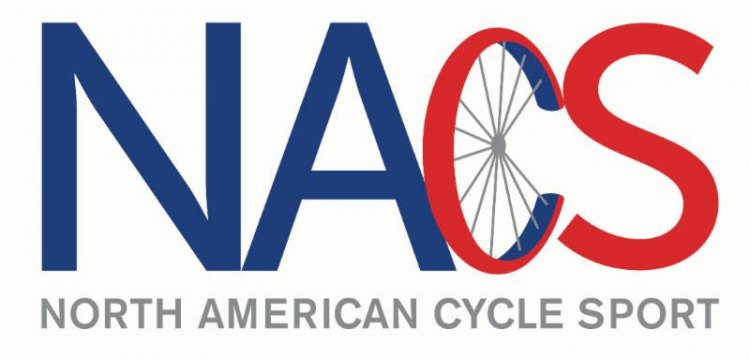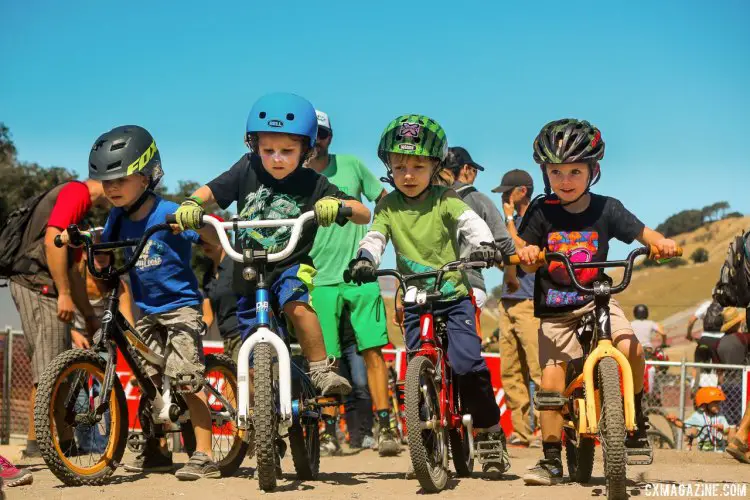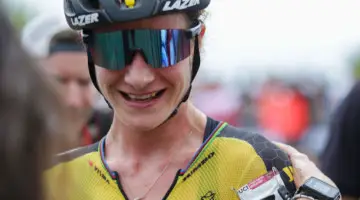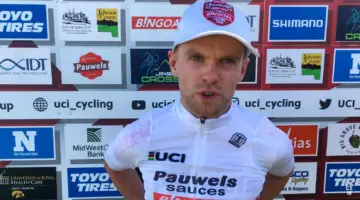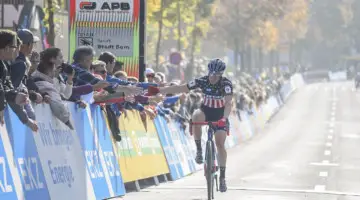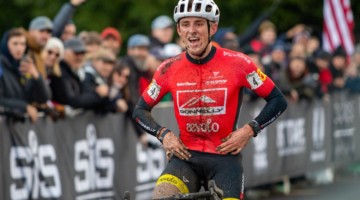We sat down to speak with Tod Manning, CEO of North American Cycle Sport (NACS), about the health of cycling in the US and his organization’s efforts to bring more people to organized, sanctioned riding.
Here, in part two, we speak with Manning about NACS’s specific plans to build their brand, NACS’s desire to give back to the sport and their place in the governance of cycling in the US.
With reporting from Andrew Yee, assistance from Greg Evans and additional follow-up by Daniel Curtin.
CXM: Regarding the sport of cyclocross and the area I live in, cyclocross in the Bay Area, most of the events here, you’d have to go to Sacramento or a unique pre-season event to participate in a USAC event. It is problematic because a lot of our local racers can’t go to Nationals because they just can’t get upgrade points. If I were to poll 10 cyclocrossers here and ask them who is insuring the races and who is the governing body behind these races, I would bet 9 out of 10 wouldn’t be able to name NABRA or whoever is providing the insurance. If you have a successful event that is sanctioned by your organization, should someone walk away knowing that it’s through your organization? Or as long as it’s a good event that’s all you care about?
TM: I would love for them to walk away just having [had] a great time. It would be even better if they walked away knowing one of the reasons that they had a good time is because it [was] an NACS sanctioned event, which allowed a rider to get upgrades and get insurance just in case they have a weird get-off and break their collarbone moment. I would want them to know that.
CXM: How do you go about building the brand without conflicting with the promoter and what they’re trying to do?
TM: By promoting the promoter. By making it that we are supporting the sport at the very entry point. So every place where someone is coming into the sport, that we are there to support what that entry point is. Whether it be a promoter, whether it be somebody doing a gravel grinder, whether it be a new rider trying to figure out how to do this. Let us tell you about the promoters or the race calendars in your area, now here are some things for you to know. If they come back and become members of NACS, great, and if they go to an event that isn’t sanctioned with NACS, great. If they go to an event sanctioned with USAC, great, I want them going to races. Now, hopefully because we build it they will come, that would be an absolutely fabulous thing, but I want it to be that people come because they think we have a good product to offer them.
CXM: We always talk about giving back to the sport, growing the sport, supporting juniors, all of that. How will your organization go about doing that, assuming you’ll reach critical mass and have some extra funds around to make that a big investment.
TM: All three of the primary partners—we’ve talked about what to do with funds coming in, so once we actually have all of our start-up costs paid for, we want to start putting money back out into programs, and programs that we’re looking at besides the money that we’re giving out to races directors and local associations.
We want to put money back out for programs…and the very first thing that we that we all talked about was junior development, and second, women’s racing…. This is something that I’ve seen over the years at different events, when I’m looking around and I’m seeing parents going “Wow!” and they then go and get a bike and then they’re involved with whatever discipline that is for their kid, that’s great. But when the parent looks around and says, “I don’t want my kid involved with these people or with this discipline, or with this particular scene,” that’s not a good thing.
CXM: Do you see that a lot?
TM: I’ve seen it, unfortunately, enough times that it caught my attention.
One of my favorite photos, I’ve got it at home, from back in the film days, is of a family having lunch after a NORBA national championship series race. There were two girls, a boy, the mom and the dad, and everybody had a medal around their neck except for the dad. It was just a great family photo, and I’m looking at it and I go, “That should be on the cover of USAC’s rulebook.” I was so excited for it. That’s what I want to see, and I want to see it at ‘cross races and road races and time trials. I want to see that, because it’s cool!
CXM: I think 99 out of 100 people in bike races would agree with you that we’ve got to develop juniors and women’s cycling, but let’s get into specifics. Let’s say if you had $100,000 in the bank to support those initiative, how exactly would you go about doing that? What would you spend it on? Is it going to the best performers, or just introducing kids to cycling in general? How do you make that happen and measure its success?
TM: I would not have the money going to the best performer, because I think that’s USAC’s job. I don’t want to reinvent that wheel because there’s already a program to do that. What I do like is what Austin McInerny with NICA [Ed. Note, National Interscholastic Cycling Association] is doing. What I like about what he’s doing is that he’s getting kids out in a safe environment, learning how to handle their bikes and how to compete.
So do I have specifics? No, but I have ideas, but we don’t have a plan yet. The reason we don’t have those specifics, we’re still worried about getting everything else up and running and having it be good for the riders and the promoters. But when we get there, that’s what we’re looking at, bring more kids into the sport. Where we go out and get bikes and get them rebuilt and give them to a group of kids in an inner city. What does it look like? I don’t know, but we’re getting all kinds of ideas. I’m passionate about this stuff but I don’t have the details yet. Let’s give ourselves a vehicle to make those things happen, that’s what we’re doing.
CXM: Is that kind of a chicken and egg question? Let’s say I was a racer considering one of your events, or considering buying a license, I might want to know, okay maybe not in the first year, but where is the money exactly going, what are the priorities, how is it going to be used? Will it come back to the same sport? Or fund some other discipline?. Those specifics, and that transparency, in my mind, would differentiate you from USAC.
TM: I just wrote that on my white board, that is something that I had not thought of, and youre probably be going to see it in an FAQ very soon.
CXM: I think that would mean a lot to riders, because with USAC we hear generalities when we talked with Steve Johnson. A perfect example is that to understand the health of our sport, you want to know whether new people are coming in and trying it. Yet no matter how often we ask, the only numbers we’ve ever received from USAC are racer days. If someone does on average an extra race a season, your racer days go up, but I just want to know how many people are actually participating in the sport. That number is interesting, but without also knowing the unique participant numbers, you don’t have an indication of how the sport is doing. I don’t think that’s hard math to do, but I have not once been able to get that number from USAC.
TM: Because of where myself and my partners came from, we have been adamant from the get go that we will operate from a position of integrity and transparency because it is that important to us.
CXM: The other perspective people have shared with me is that one of the best ways to grow the sport is to look at masters or at least adults, because so many juniors that get exposed to the sport, they actually fall out of it and you have a better chance of targeting someone in their adulthood and getting many more years out of them. If I look at all of my peers who started when they were young kids or in high school, most of them don’t touch a bike right now, while many of my friends started as adults if not Masters. I wonder if you have any thoughts on that?
TM: There are two different things. Yes you need to get adults out there because you need to have something to be economically viable. Most juniors, I think in just about any sport, they take some time off, especially when they turn 16 and get a driver’s license, but there’s that period of time where it’s difficult.
Ideally we get people in and they become part of something which is a community. I think about kids being able to be involved not only at the high school level, but talk to them and make it clear that there are opportunities for kids to race in college, and in some cases maybe even get scholarships. That is something that unless you have people out there talking to you about it, you won’t know.
The bigger the community, the easier it is to keep kids in that community. On the mature side, you want it to be where they have fun, and they’re helping to bring in the bread and butter for the promoters. They help pass on the culture of the sport and this is where the support for clubs and anything where people are out and understanding “here’s what it means to handle a bike in a group.” You’ve got to support the entire infrastructure, the entire stack, you can’t just pick and choose.
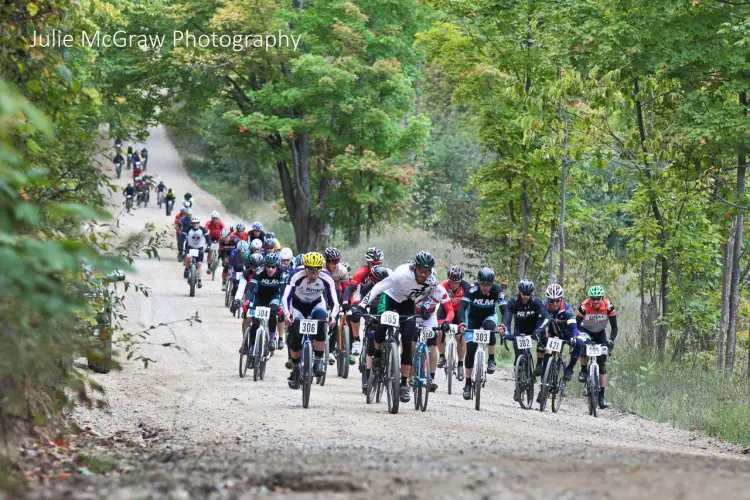
File Photo: Gravel rides like the Gravel Grinder by Michigan Mountain Mayhem are events NACS is targeting along with grassroots racing. © Julie McGraw Photography
CXM: For this organization you mentioned you and your partners, could you just identify them, and are you guys just bootstrapping this or do you have an external investor and a business plan? How is this all working?
TM: So the partners in the business right now are Liz Campbell and Tom Balaban. We are financing this out of our pockets right now with the goal that we’re going to get paid back. This is a labor of love, we don’t have outside investors.
CXM: Are you a non-profit or a for-profit?
TM: Right now we are a for-profit, somewhere down the road we fully anticipate that we will be a non-profit, but we need to get there first.
CXM: Why not start off as a non-profit?
TM: Because of the competitive aspect of what happens when you have to reveal all of your financials with an organization that we’re competing against. My experience with certain folks is that I’d rather not tell them anything about us that they can’t already find out online…. If they want to go digging, we will show them a certain amount, but nothing more because of what I’ve seen them do to others. When we get to the point where we have the sufficient numbers and the money’s coming in, then absolutely we need to go to a non-profit status.
CXM: Couldn’t that scare off a promoter or racer thinking you guys are just in it for the profit?
TM: I think that everybody should look at not just us but anybody else [like that]. A non-profit doesn’t mean that they don’t make money. I think everyone should always…when they consume, when they’re spending money on something…they should always be critical of where is that money going, how is it going to be used. That’s where we have to earn the trust of riders, race directors, promoters and local associations and even USAC before they’re really going to believe that our words are true and that the walk that we’re doing is exactly what we said we were going to do. Once we have build that trust, then we’re going to do everything we can to keep that trust and to expand on it. So yes, I think they should question it, absolutely, just like they should for anybody else, whether it’s a for-profit or a non-profit.
CXM: Was there ever consideration or an attempt to approach NABRA and say “hey we also want to improve bike racing, and, can we team up and maybe make some changes or make some improvements or give you more man power to do what you’re doing?”
TM: I did not even know about NABRA until we were almost launched, which just surprises the heck out of me.
I’d been out looking, I’d know OBRA for years but I didn’t know about NABRA. Then it was like, when I did learn, that if I didn’t know, and I’d been in the sport this long, then I don’t want to be partnering with that. Does that make sense? It’s not a derogatory thing. We’ve launched nationally, we are looking at the entire US, and that’s our target.
CXM: Regarding the changes you’ve seen recently with the USAC, are those a direct response to NACS?
TM: To some degree, yes, USAC is responding to NACS, but it’s also likely a direct result of the new leadership. Bouchard-Hall is doing a really good job. He’s done a good job of figuring out what needs to be done.
CXM: Since we first spoke, have you signed on any promoters to use NACS for sanctioning?
TM: Yes. We have some Midwest road races sanctioned with us. We had others but negotiations fell through and they went with USAC. We’re also talking with some other road races and with negotiations going on for gravel events.
CXM: Losing out on those events that were looking at NACS, is that a function of USAC beating you at your own game?
TM: Maybe. But if it’s a function of the result being good for promoters then I’m all for it.
CXM: What’s the end game for NACS?
TM: We want to be broader than racing. We want to bring people into organized cycling, up in the ranks, and feed them into the elite level of the sport, which is 100% USAC.
CXM: But where does that leave NACS if you’re taking newer riders and feeding them into the USAC system?
TM: There is room for NACS in the long term. The more USAC can support the grassroots, the happier I am, but can USAC do that? My judgment is reserved. We’re trying to building critical mass in pockets around US so riders and local associations can see the benefits of NACS events in their area and then a groundswell from there. We’re not after that. We’re not looking to sanction international competitions or at this point in time Nationals. The UCI controls that and they are only going to work with a national body, that’s USAC. But there’s room for us to support the growth of cycling.
CXM: Thank you very much for taking the time to speak with us.
TM: My pleasure.
If you missed part one of our interview with Tod Manning, you can find it here.













